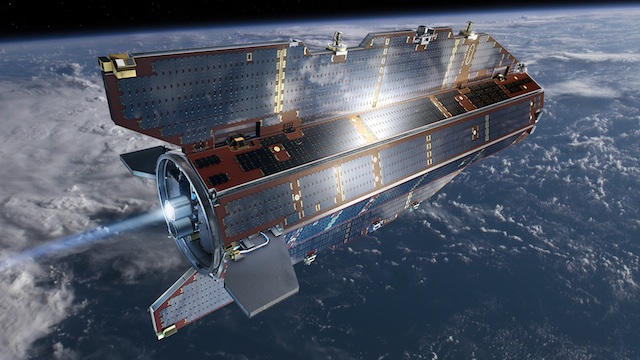SUMMARY
This is AI generated summarization, which may have errors. For context, always refer to the full article.

PARIS, France – A spent science satellite that had measured Earth’s gravity field reentered the atmosphere on Sunday night and mostly disintegrated as planned, the European Space Agency (ESA) said Monday, November 11.
As expected, an estimated 25% of the one-ton GOCE satellite reached the Earth’s surface, said an ESA statement, but “no damage to property has been reported”.
It did not say where the fragments hit.
GOCE “is only a small fraction of the 100-150 tons of man-made space objects that reenter Earth’s atmosphere annually,” said Heiner Klinkrad, head of ESA’s space debris office.
“In the 56 years of spaceflight, some 15,000 tons of man-made space objects have reentered the atmosphere without causing a single human injury to date.”
Scientists had predicted that several dozen fragments of GOCE, totaling some 200 kilograms (440 pounds) – about the weight of car engine – would survive contact with the atmosphere.
The Gravity Ocean Circulation Explorer (GOCE) satellite was placed in orbit in 2009 on a mission to monitor variations in gravity and sea levels.
The sleek, finned craft’s mission came to a natural end when it ran out of fuel on October 21, leaving it without power to maintain its altitude in low orbit, where there are still lingering molecules of air.
GOCE was launched in March 2009 at an altitude of 260 kilometers (160 miles) – later lowered to 224 km – the lowest ever for a research satellite.
The 350-million-euro ($465-million) mission has lasted twice as long as its initially-scheduled 20 months.
ESA said the satellite reentered the atmosphere around midnight GMT Sunday, November 10, on a descending orbit that crossed Siberia, the western Pacific Ocean, the eastern Indian Ocean and Antarctica.
GOCE was designed and built before 2008, when international recommendations were adopted that a scientific satellite must be able to execute a controlled reentry, or burn up completely after its mission. – Rappler.com
Add a comment
How does this make you feel?
There are no comments yet. Add your comment to start the conversation.